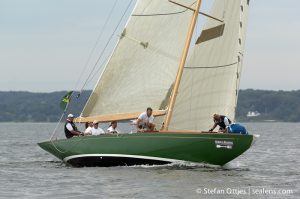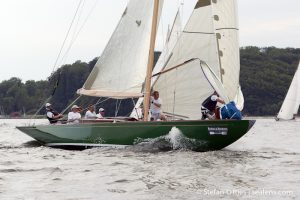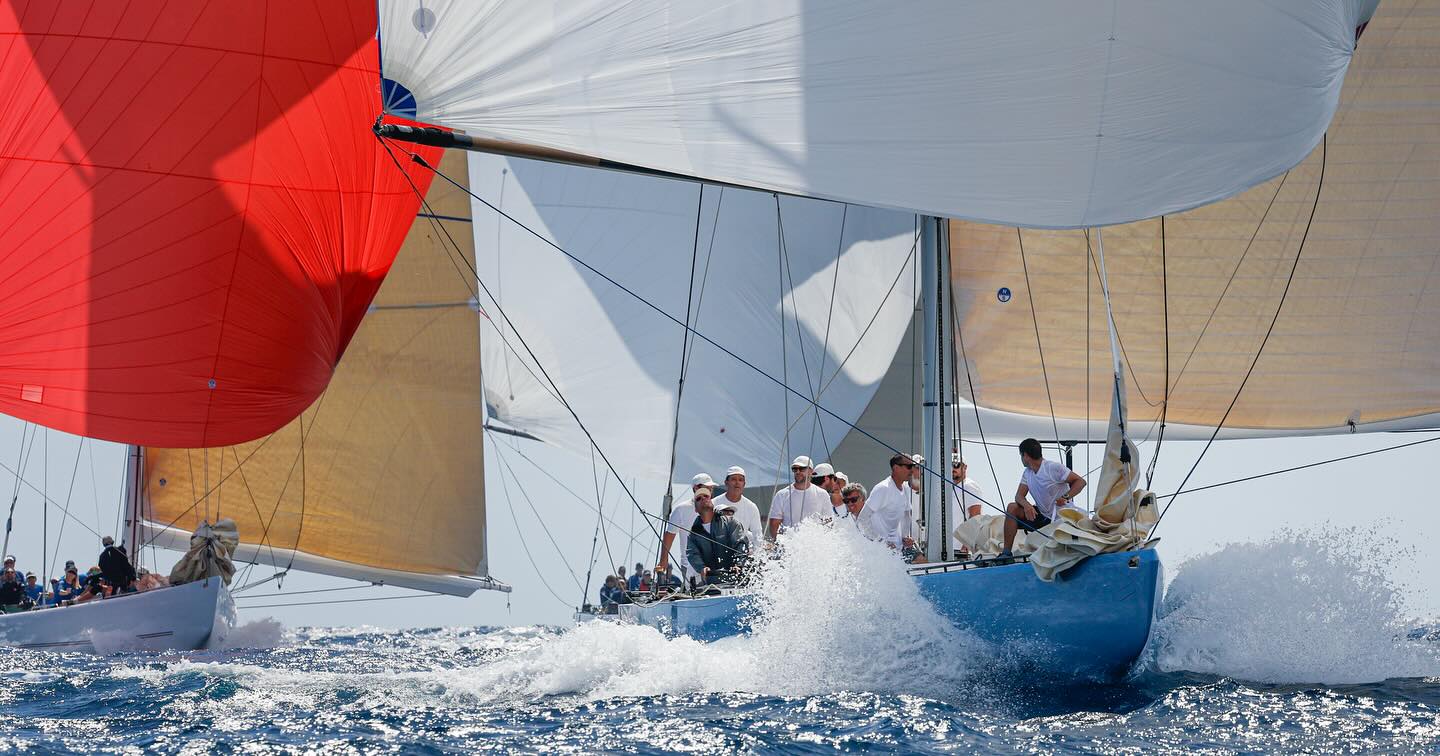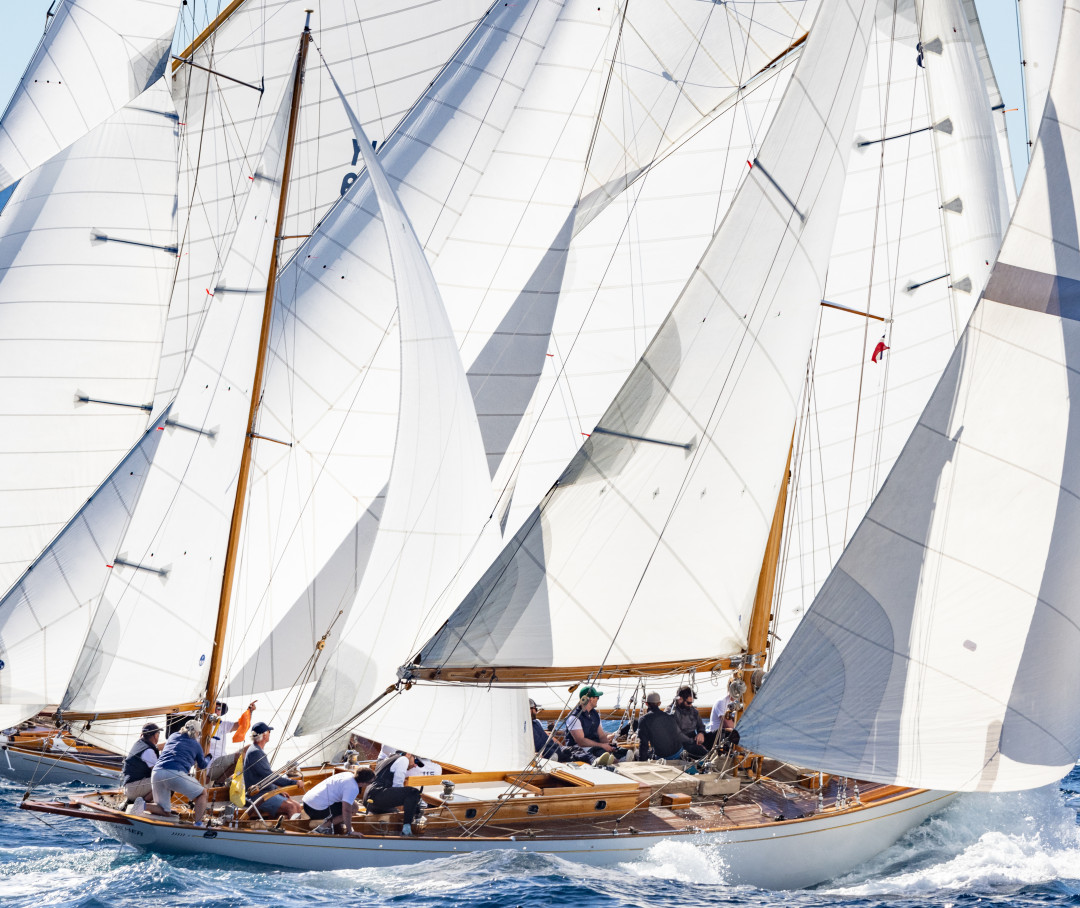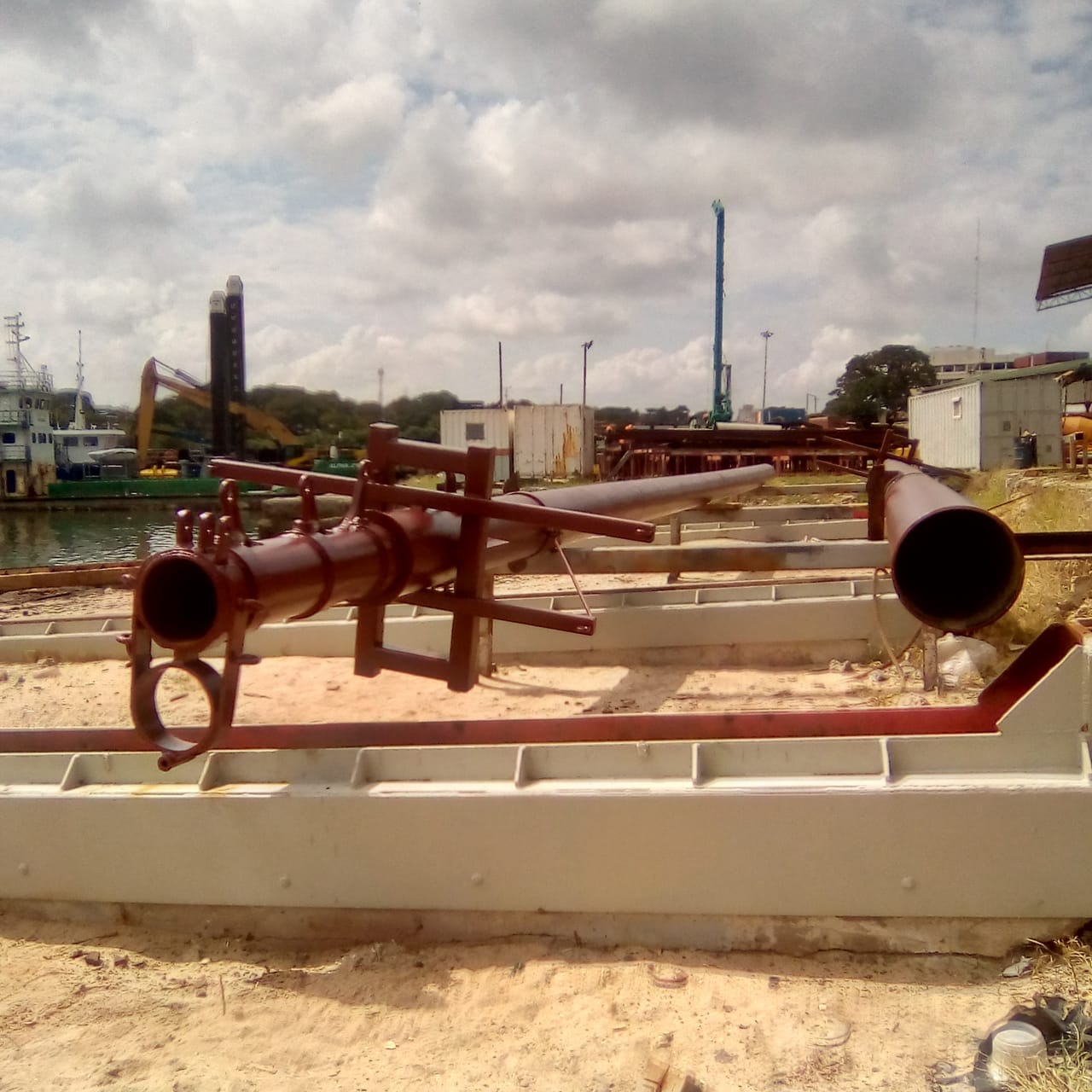Those of us who have experienced H.M. King Olav under full sail in his dark green painted – the Anker colour – 8m R Sira, often in winds which would make others reef once if not twice, will never forget that marvellous sight.
Sira was perhaps the most beautifully designed boat ever to come from Johan Anker’s drawing board – the summit of his long experience. But even at the age of 67 Anker was still eager to experiment with new ideas and gain greater speed from refining the shape of the hull. Luckily for him, he always had a nose for business and seemed to find a willing syndicate amongst his rich friends to order his boats. This time, for the season 1938, Crown-Prince Olav, Georg von Erpecom, Anders Jahre, Jacob Kjøde and Thomas Olsen all clubbed together to order a new eight metre, which right from the start was given the name Sira (which means “Sire”, a courteous form of address in old Norwegian, if the name is not from the river in West Norway called Sira).
The background for the new order was as follows:
In 1937 the “old” Anker 8-metre from 1930, Silja, a silver medal winner in the 1936 Olympics at Kiel, finally capitulated to the Swedish Yvonne in the Kattegat Cup. The Royal Norwegian Yacht Club (KNS) had managed to win this trophy more often than not in a competition originally between Denmark, Norway and Sweden, but in recent years the sole challenge had come from the Royal Swedish Yacht Club in Gothenburg. A new eight would have to win back the cup for Norway.
SIRA was not the only newcomer in the season of 1938. Bjarne Aas, Anker’s rival down at Fredrikstad, had received an order from the Bergen sailor Nordahl Wallem; this new eight was named Anne Sophie. But in the selection races for the Kattegat Cup, Sira, with Anker as helmsman, proved superior in all 5 starts. Anker must have been relieved, because his last eight metre, Viking, had not performed satisfactorily in the 1936 selection races for the Olympics.
Sira, the challenger down in Gothenburg, faced Albatross, also a new boat, designed by Tore Holm. Albatross was faster in sidewind and running downwind, but Sira was far superior when running on a tack, so that Anker, again at the helm, with his sons Erik and Christian in the crew, won three races in a row and thus could take home the trophy once again to KNS. The last time Anker had personally won the cup was as far back as 1906, with Brand 2, so over 30 years later he must have treasured this particular victory.
In the KNS autumn regatta, Crown-Prince Olav tried out Sira himself, and won over Silja and Fenris; a notice in Seilas early in 1939 informed its readers that the Crown Prince had now become the owner of Sira. After the first season, the syndicate members had drawn lots; the winner of the lottery could then take over the boat. The actual winner seems to have arranged things so that Sira was presented to the Crown Prince, and Olav thought he had won! Be that as it may, Crown-Prince Olav had a busy early summer schedule of official duties in 1939, comprising a tour of the United States with Crown-Princess Martha from April- July. In his absence, it was arranged that Anker would sail the boat.
For the season 1939, yet another 8-metre, Froya, had been produced by Bjarne Aas, this time for Olaf Ditlev-Simonsen, who had been at the helm on Silja in the 1936 Olympics. For 1940 the sailing Olympics were scheduled for Helsinki; this explains the high level of sporting activity throughout this summer, in spite of the dark war clouds which menaced. There was always the hope that the cataclysm could be averted, at least for Scandinavia, with its strong tradition of neutrality which had kept this area of Europe out of WW I.
Yet again in the Kattegat Cup, Johan Anker with Sira defeated Albatross, this time with a new helmsman, George Lindahl, over three races in succession. Especially the first race was exciting; Sira’s spinnaker collapsed just before the finishing line, but the momentum carried Sira over the line a head in front of the Swedish boat, coming up fast from behind. In varying winds, strong the second day, and weak the third day, Sira won convincingly. The Swedes would have to find another boat; she came in the shape of Svanevit–Swanwhite.
Directly following the Kattegat Cup, Fredrikstad Sailing Club (near Hankø) arranged a two-day sailing event. Besides the Scandinavians, France, Germany, Italy and Great Britain had sent representatives to compete in the various classes. In the 8-metre class, Froya and Anne-Sophie joined Sira in the fight against Albatross. On the first day Albatross won a convincing victory, with Sira in second place 5 minutes behind, but on the second day Anker sailed up against the wind and passed both Albatross and Froya, the leader, to snatch the victory.
In the Hankø regatta, the third event to take place in quick succession that week, Tore Holm’s new Svanevit finally entered the lists, and won two victories during the three day “tournament”. Erik Anker was helmsman on board Sira the first day, sailed brilliantly, and won. The second day, Johan Anker took over Sira again, but the forestay broke. Nevertheless, he crossed the line second, in front of Albatross. So Sira won the King’s Cup, set up especially for the event, having one victory and two second places as compared to Svanevit’s two victories and a fifth place. It was this cup, taken home by Erik Anker, which later became the Sira Cup, donated by Erik and (King) Olav in 1983 to the International Eight Metre Association (IEMA) for the best placed 8 built before 1960, in the annual World Cup event.
By August 1939, Crown-Prince Olav had returned from the States, and was now eager to represent KNS and Norway in two events at Sandhamn (near Stockholm). In the Coppa d’ Italia, Olav must have needed time to get acclimatized, because Sira came in second to last. The Swedish Ilderim, the moral victor of the 1936 Olympics (because of disqualification she was actually fourth) won the Coppa for the second year running. An interesting collection of eights had assembled at Sandhamn: besides Sira and Ilderim, French Le Gaulois, Italian Pinuccia and yet another Tore Holm design, Atair, competed against each other. In the second event, Crown-Prince Olav acquitted himself honourably, taking a tied third place with Ilderim.
The final sailing event in Norway before the outbreak of war on 1 September was the KNS “autumn” regatta, held 19-20 August. With only a further 10 days to go before Germany invaded Poland, and the subsequent declarations of war, one can perhaps draw a parallel to the famous Europe Week 1914, held just before the outbreak of Armageddon in early August, when the competing sailors were blissful in their ignorance. However, this time, the participants at the KNS autumn event must surely have realized the gravity of the international situation. Olav took part with Sira, and Martha was on board as crew. The photos of Prince Harald and the Princesses in the cockpit of Sira were taken about this time – the last precious family moments of the dying sailing season.
On 2 October 1939, KNS held a meeting to congratulate those members who had represented their club and country. Commemorative medals were handed out and Sira’s crew were acclaimed: Johan Anker, Christian Anker, Hans Struksnes, Nordahl Wallem and Fritjof Larsen. At this meeting, Anker made a moving and emotional speech; he jokingly remarked that he intended to keep going for a good while yet. His toast was for Norway to remain a free country, come what may. On 9 April 1940 the calamity of German invasion befell Norway, but the Royal Family escaped from Oslo. At the end of May, Johan Anker met King Haakon and Crown-Prince Olav for the last time in Tromsø, north of Norway, and bade them farewell on 7 June (see the detailed account in English in CLASSIC LINES, November 1997).
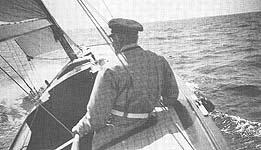
Johan Anker an Bord der “Sira” (Foto: T. Thommesen)
During the war and occupation of Norway, Sira was confiscated by Reichscommissar Terboven for his personal use. In 1980, King Olav was asked by the editor of Seilas how Sira had fared. The King replied that professional boatsmen from Hamburg had been put in charge of her maintenance. When His Majesty took possession again of Sira at the end of the war, the machine gun holders were still on board, but otherwise there was not much damage, luckily.
By 1946, the Kattegat event had started up again; everything got back to normal surprisingly quickly, in spite of the general lack of materials and boating equipment. This time Crown-Prince Olav was entrusted and succeeded with the prestigious task of defending the trophy against the “dangerous” challenger Svanevit, with Lindahl again at the helm..
The following year, 1947, with the same two boats, when the score was two races won by each boat, the final day was marred by almost gale force winds (20 sec.m.). The Swedish referee surprisingly signalled for the start, which caught Sira napping. She crossed the startline 9 minutes behind Svanevit, and could not catch up. The cup again returned to Gothenburg.
The next four years there was a ding-dong battle between the two boats, with victories in 1948 and 1950 for SIRA, the latter victory taking place “away”, down in Marstrand, the usual Swedish venue. To round off the story about the Kattegat Cup, Sira lost it in 1951, and was replaced by her arch-rival Silja, who made an astonishing comeback. Svanevit was again the “eternal” opponent . Unfortunately Silja broke her mast on the third day, so Svanevit again won the series.
In 1958, the 75th jubilee year of KNS, there was a grand finale of the Kattegat Cup in the 8-metre class (the statutes were then changed and it was competed for by other classes) at Hankø. Sira was this final time matched against Atair with Robert Ameln at the helm. Olav, the new King, had just received his coronation blessing up at Trondheim and was on a royal tour of the Norwegian coastal towns. In his absence, Finn Chr. Ferner , Norway’s silver medallist in the 6-metre class at Helsinki in 1952 and former winner of the Gold Cup, was helmsman on Sira. Again the struggle was extremely close, but Sira’s new weapon, the “red wonder” of a spinnaker, clinched matters in the final race, thanks to skilful handling by Ferner, who came in 3 minutes ahead. This victory was a fine present from his sailor friend to His Majesty on 2nd July (King Olav’s birthday).
SIRA made her mark in two other connections before we must close this account on the occasion of her diamond jubilee (1938-1998). In 1947, members of KNS who were primarily interested in cruising rather than regatta sailing, started a passage race from Oslo (at Dronningen) to Færder lighthouse and back again. As we recall from all the publicity surrounding the 50th jubilee of the “Færder Seilas” last year, Carmen IV, a cruising 8-metre, won the first year. But it was Crown-Prince Olav and Sira who by their participation during the years 1949-51 really got the passage race going as a significant event in the Norwegian sailing calendar. In recent years over 1000 boats have participated.
Sira’s swan song was in 1983. The IEMA had been founded a decade or so earlier, and had been organizing a World Cup event each year, with venues mostly in Sweden and Finland at this time. Eights from USA and Canada were shipped over, and often stayed the winter in Europe so as to compete the following year. Since KNS would be celebrating its hundred years, with King Olav’s eightieth birthday falling on 2 July, what better festivities could be planned than a world championships for the 8-metre class organized by KNS and IEMA jointly? King Olav declared his willingness to participate with Sira, and the boat was re-equipped for the occasion with an aluminium mast and new “high tech” sails, donated by officers on board the Royal Yacht Norge. Crown-Prince Harald and Finn Chr. Ferner mustered as crew, with King Olav at the helm. After 6 races, Sira was in 4th position, and had done best of the vintage eights against modern Iriquois, but as one race had to be discarded, her final placing was 5th, an extremely creditable result, and Sira had beaten her old rival Silja to boot (now representing Finland)! The table of results is presented in the SNARKEN article.
For many years, Sira had been moored down at Hankø for the summer season, and as a pure leisure pursuit, King Olav used to sail round the island almost daily with crew usually made up of officers from Norge. Many hair-raising anecdotes have been told by sailors who have tried to keep up with His Majesty, he steering Sira into rock-infested waters in the thrill of the chase, they not daring to match his intimate knowledge and follow him thither. Sira was in fact the only regatta yacht sailed for pure enjoyment by King Olav and the Royal Family.
After King Olav’s death in 1991, his heirs decided to donate Sira to the naval marine museum in Horten on certain conditions.
After restoration she has competed in the 2011 Worlds and Europe Week 2014 with King Harald V on board.
Information courtesy of www.yachtsportarchiv.de
